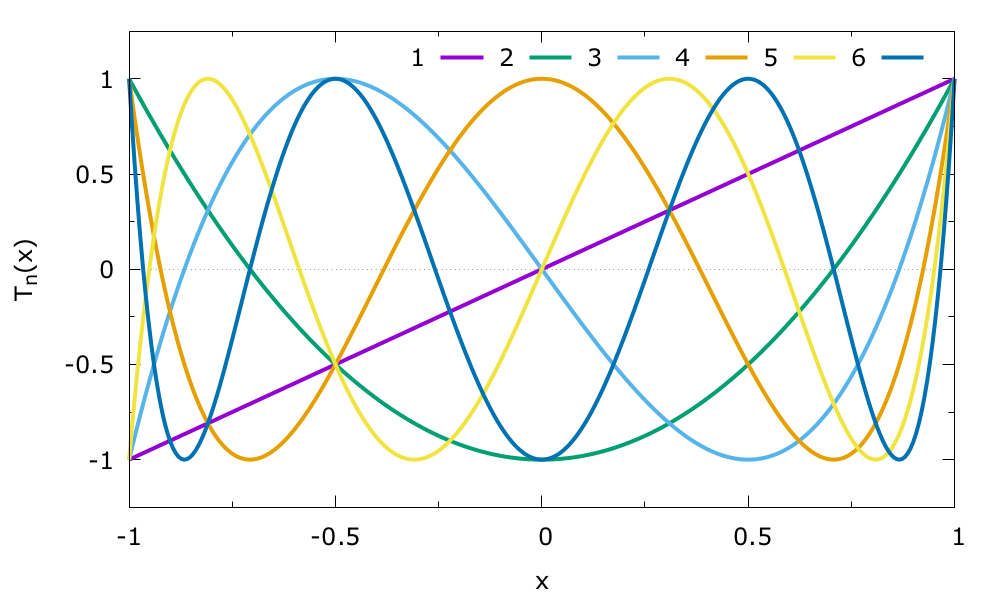| This is part of the ves module | |
| It is only available if you configure PLUMED with ./configure –enable-modules=ves . Furthermore, this feature is still being developed so take care when using it and report any problems on the mailing list. |
Chebyshev polynomial basis functions.
Use as basis functions Chebyshev polynomials of the first kind \(T_{n}(x)\) defined on a bounded interval. You need to provide the interval \([a,b]\) on which the basis functions are to be used, and the order of the expansion \(N\) (i.e. the highest order polynomial used). The total number of basis functions is \(N+1\) as the constant \(T_{0}(x)=1\) is also included. These basis functions should not be used for periodic CVs.
Intrinsically the Chebyshev polynomials are defined on the interval \([-1,1]\). A variable \(t\) in the interval \([a,b]\) is transformed to a variable \(x\) in the intrinsic interval \([-1,1]\) by using the transform function
\[ x(t) = \frac{t-(a+b)/2} {(b-a)/2} \]
The Chebyshev polynomials are given by the recurrence relation
\begin{align} T_{0}(x) &= 1 \\ T_{1}(x) &= x \\ T_{n+1}(x) &= 2 \, x \, T_{n}(x) - T_{n-1}(x) \end{align}
The first 6 polynomials are shown below

The Chebyshev polynomial are orthogonal over the interval \([-1,1]\) with respect to the weight \(\frac{1}{\sqrt{1-x^2}}\)
\[ \int_{-1}^{1} dx \, T_{n}(x)\, T_{m}(x) \, \frac{1}{\sqrt{1-x^2}} = \begin{cases} 0 & n \neq m \\ \pi & n = m = 0 \\ \pi/2 & n = m \neq 0 \end{cases} \]
For further mathematical properties of the Chebyshev polynomials see for example the Wikipedia page.
| ORDER | The order of the basis function expansion. |
| MINIMUM | The minimum of the interval on which the basis functions are defined. |
| MAXIMUM | The maximum of the interval on which the basis functions are defined. |
| DEBUG_INFO | ( default=off ) Print out more detailed information about the basis set. Useful for debugging. |
| NUMERICAL_INTEGRALS | ( default=off ) Calculate basis function integral for the uniform distribution numerically. Useful for debugging. |
Here we employ a Chebyshev expansion of order 20 over the interval 0.0 to 10.0. This results in a total number of 21 basis functions. The label used to identify the basis function action can then be referenced later on in the input file.
bfC: BF_CHEBYSHEV MINIMUM=0.0 MAXIMUM=10.0 ORDER=20